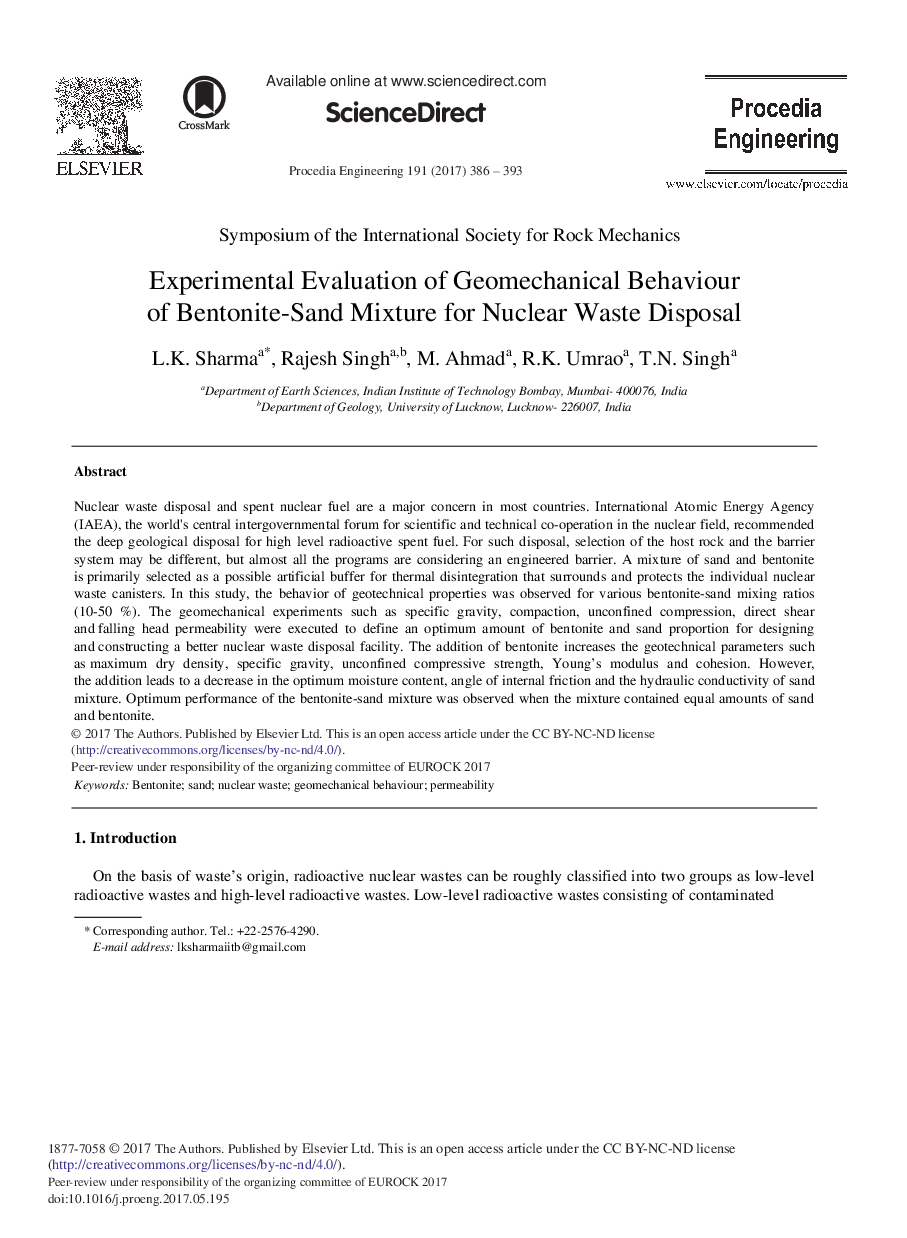| Article ID | Journal | Published Year | Pages | File Type |
|---|---|---|---|---|
| 5027521 | Procedia Engineering | 2017 | 8 Pages |
Nuclear waste disposal and spent nuclear fuel are a major concern in most countries. International Atomic Energy Agency (IAEA), the world's central intergovernmental forum for scientific and technical co-operation in the nuclear field, recommended the deep geological disposal for high level radioactive spent fuel. For such disposal, selection of the host rock and the barrier system may be different, but almost all the programs are considering an engineered barrier. A mixture of sand and bentonite is primarily selected as a possible artificial buffer for thermal disintegration that surrounds and protects the individual nuclear waste canisters. In this study, the behavior of geotechnical properties was observed for various bentonite-sand mixing ratios (10-50%). The geomechanical experiments such as specific gravity, compaction, unconfined compression, direct shear and falling head permeability were executed to define an optimum amount of bentonite and sand proportion for designing and constructing a better nuclear waste disposal facility. The addition of bentonite increases the geotechnical parameters such as maximum dry density, specific gravity, unconfined compressive strength, Young's modulus and cohesion. However, the addition leads to a decrease in the optimum moisture content, angle of internal friction and the hydraulic conductivity of sand mixture. Optimum performance of the bentonite-sand mixture was observed when the mixture contained equal amounts of sand and bentonite.
